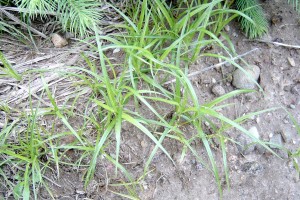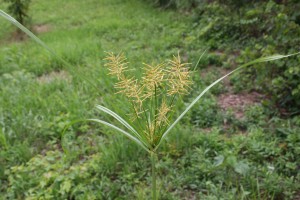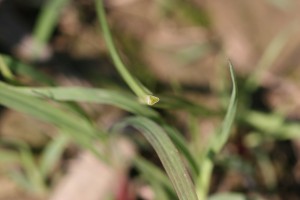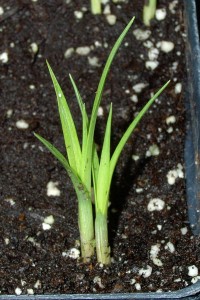
Yellow nutsedge – Cyperus esculentus
Cyperus esculentus L.
Cyperaceae (Sedge family)
MI Status
Native
Life cycle
Rhizomatous perennial sedge.
Leaves
Yellowish green, shiny, grasslike leaves are long and narrow, and distinctly ridged along the midvein, and they narrow to a long, sharp point. Leaves are mostly basal and alternate, and they point outward from the stem in three directions.
Stems
Erect, solid, up to 3-foot-tall stems are triangular in cross-section. Plants spread by wiry, scaly rhizomes and nutlike tubers produced at the rhizome tips.
Flowers and fruit
The seedhead consists of numerous yellowish brown spikelets, which occur in a terminal, umbrellalike cluster. Under each seedhead is a whorl of several long, leaflike bracts. The seed is enclosed in a single-seeded, three-angled, yellowish brown fruit with a blunt end.
Reproduction
Tubers, rhizomes and, very rarely, seeds.




Other Documents in this Series
You Might Also Be Interested In
Accessibility Questions:
For questions about accessibility and/or if you need additional accommodations for a specific document, please send an email to ANR Communications & Marketing at anrcommunications@anr.msu.edu.



 Print
Print Email
Email




